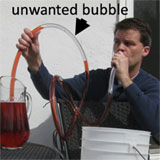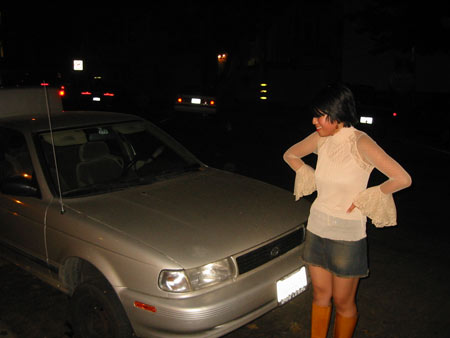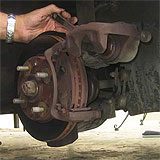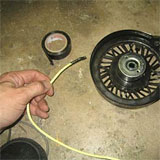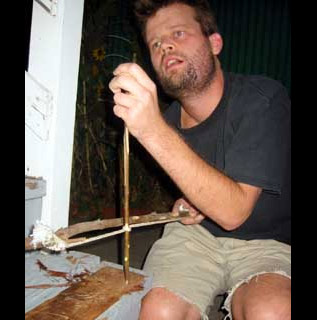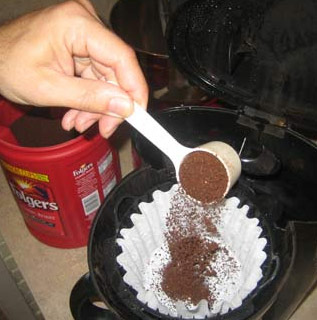Easy, Illustrated Instructions on How to Fix Dull, Faded, Weathered Headlights on Older Cars
Page 1 | Page 2
Have a drill and an aging car? You gotta do this. It is incredibly easy and makes a huge difference in how your car looks.
After about 10 years, plastic headlights begin to look cloudy and dull. This is troublesome because everything else on the car's exterior will probably still look great.

The headlight lenses are the first thing to go. But they are probably the easiest to renew, as it turns out, almost as easy as washing the car.
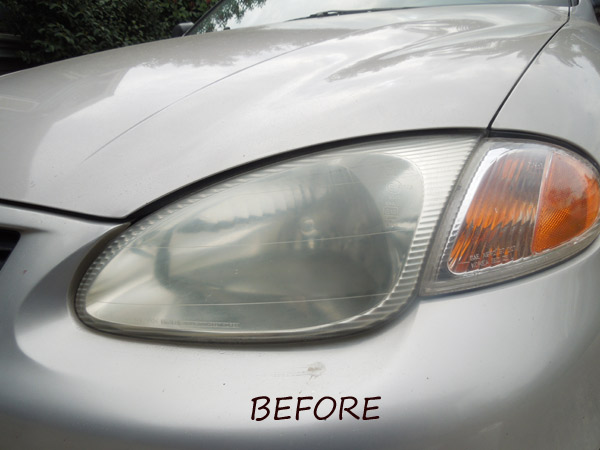
I was introduced to the concept of polishing the headlight lenses in 2010 when I saw a strange guy polishing headlights out in the parking lot of my job. He had a power drill and a little kit of equipment. He was clearly detail-oriented and doing a very careful job.
I didn't get a chance to see the finished headlights, but I assumed he had restored them to a like-new condition.
He was probably charging $100.
Last year I let a gas station salesman demonstrate his spray-on Carnuba Wax product on my headlights. It made a huge difference, but the effect faded about 10 days later.

Finally, I saw this $10 lens polishing kit for sale at Harbor Freight Tools, an infamously cheap tool store. I bought one immediately. Read the rest of this article, but if you are interested in buying a kit like this, you can get them at Harbor Freight or at Amazon.com.

Inside the kit, there were five parts: a tiny bottle of Headlight Lens Polish, A drill adapter, two abrasive resurfacing pads and one black sponge polishing pad. The pads each had one side covered with adhesive to adhere to the drill adapter.
The kit came with directions. The directions are simple:
- Mount the drill adapter onto a drill
- Resurface the headlights for three minutes each, spraying water onto the lens as you work.
- Polish each headlight for at least three minutes, using the polishing pad and compound.

The directions recommend using a corded power drill. I didn't have one handy, so I used my Ryobi cordless drill. In the photo the adhesive pad is stuck to the drill adapter, and the adapter is in the drill chuck, ready to go.
I also prepared a spray bottle of water.

To protect your car's paint job, you should mask off the area of the car surrounding the headlights. I didn't bother, because my car's paint job is already marred in places and I am confident in my ability to sand between the lines. Only later did I realize I'd have to mask them off so that I could snap an illustrative photo including the extra step of painstakingly photoshoping the lens to make it look dull again. I hope you appreciate the effort I put into that image above.

With a few squirts of water, I began sanding the lens. Whenever the headlights get wet, the tiny cracks are obscured, so the plastic immediately looked clearer.

But they weren't actually getting clearer. They were getting foggier.

The resurfacing pad was sanding them. Adding a million tiny scratches, but hopefully removing any larger ones.

After three minutes of resurfacing, I stopped and cleaned the lens. As expected it was uniformly dull.

Next, it was time to polish the lenses.
I removed the abrasive disk and replaced it with the "buffer" disk. The buffer disk was a puck of surprisingly thick black sponge.
Onto this I added a dime-size dollop of polishing compound.
I don't know what the polishing compound is, but it is labelled as being "chemical free" and "optical grade". Rubbing it between two fingers, I could not detect any particles or grit whatsoever. The instructions stressed that I should be more careful about spraying water onto the work during this polishing stage, because too much water would just wash away this little spurt of compound.
Before I started the drill spinning, I pushed the pad around the headlight, spreading the compound around to every part of the headlight surface. Then I started the drill back up and started polishing the headlight.





